- Choose the Perfect Cucumber Variety for Windowsill Gardening
- 1. Patio Snacker Cucumber
- 2. Bush Champion Cucumber
- 3. Spacemaster Cucumber
- Consider the Growth Habit and Space Requirements
- Bushy Varieties
- Vining Varieties
- Space Requirements
- Provide the Right Growing Conditions for Your Cucumbers
- 1. Sunlight
- 2. Temperature
- 3. Ventilation
- 4. Humidity
- 5. Watering
- 6. Fertilizing
- 7. Support
- 8. Pest and Disease Control
- Ensure Ample Sunlight and Warm Temperature
- 1. Choose a Sunny Location
- 2. Rotate the Plants
- 3. Supplement with Artificial Light
- 4. Maintain Warm Temperature
- 5. Use Reflective Surfaces
- Create a Well-Draining Soil Mix
- Watering and Nutrient Needs for Your Windowsill Cucumbers
- 1. Watering:
- 2. Nutrient Needs:
- Implement a Regular Watering Schedule
- Use a Balanced Fertilizer for Optimal Growth
- Organic Fertilizer Options
- Managing Pests and Diseases on Your Windowsill Cucumbers
- Pests
- Diseases
- Tips for prevention and care:
- Inspect Your Plants for Common Pests
- “Question-Answer”
- What are the best cucumber varieties for growing on a windowsill?
- Can I grow cucumbers in a small pot on my windowsill?
- How much sunlight do cucumbers need to grow on a windowsill?
- What type of soil should I use for growing cucumbers on a windowsill?
- How often should I water my cucumber plants on a windowsill?
- Do I need to use fertilizers for growing cucumbers on a windowsill?
- “Video” This SIMPLE Garden TIP Will Get You MORE CUCUMBERS!
If you’re a fan of fresh, crisp cucumbers and want to enjoy them year-round, growing them on your windowsill is a great option. While cucumbers are typically grown in the garden, with some basic knowledge and care, you can successfully cultivate these delicious vegetables indoors. In this article, we’ll explore how to choose the right cucumber variety for growing on your windowsill and provide easy care tips to ensure a successful harvest.
Choosing the right cucumber variety is crucial for a successful windowsill garden. Look for compact or dwarf cucumber varieties that are specifically bred for indoor or container gardening. These varieties are typically smaller in size, making them more suitable for growing in limited spaces. Some popular cucumber varieties for growing indoors include ‘Patio Snacker,’ ‘Bush Champion,’ and ‘Spacemaster.’
Once you’ve selected the appropriate cucumber variety, it’s important to provide them with the right growing conditions. Cucumbers are warm-season plants, so they thrive in bright and sunny locations. Place your pots or containers near a south-facing window or use artificial grow lights to ensure they receive at least 6-8 hours of direct sunlight each day. Additionally, cucumbers require well-drained soil that is rich in organic matter. Choose a lightweight potting mix specifically designed for vegetable gardening.
Proper care is essential for the successful growth of cucumbers on your windowsill. Keep the soil consistently moist but not waterlogged. Water your plants regularly, especially during hot summer months when the soil dries out quickly. To prevent diseases, avoid wetting the foliage when watering. Additionally, cucumbers are heavy feeders, so fertilize them every 2-3 weeks with a balanced vegetable fertilizer according to the package instructions. Lastly, consider providing support for your cucumber plants, such as a trellis or bamboo stakes, to help them grow upright.
With the right variety selection and proper care, you can enjoy fresh cucumbers from your windowsill garden throughout the year. By following these easy tips, you’ll be on your way to a bountiful harvest of homegrown cucumbers that are perfect for salads, pickling, and snacking. So why wait? Start growing your own cucumbers on your windowsill today!
Choose the Perfect Cucumber Variety for Windowsill Gardening
When growing cucumbers on your windowsill, it’s important to choose the right variety that is suitable for container gardening and has a compact growth habit. Here are a few cucumber varieties that thrive in a windowsill garden:
1. Patio Snacker Cucumber
The Patio Snacker cucumber is an excellent choice for windowsill gardening. This variety is compact and produces small-sized cucumbers that are perfect for snacking. It requires minimal space and can be grown in a small container.
2. Bush Champion Cucumber
The Bush Champion cucumber is another great option for windowsill gardening. It has a bushy growth habit and doesn’t require extensive pruning or support. This variety produces straight cucumbers that are suitable for slicing and pickling.
3. Spacemaster Cucumber

The Spacemaster cucumber is specifically bred for container gardening and small spaces. It has a compact growth habit and produces shorter cucumbers that are perfect for slicing or pickling. This variety is also known for its disease resistance.
When selecting a cucumber variety for windowsill gardening, consider the available space, sunlight exposure, and your personal preference in terms of cucumber size and taste. It’s also a good idea to choose disease-resistant varieties to ensure a successful windowsill garden.
Consider the Growth Habit and Space Requirements
Before growing cucumbers on your windowsill, it is important to consider the growth habit and space requirements of the variety you choose. Different cucumber varieties have different growth habits, such as bushy or vining, and this will affect the amount of space they need to grow.
Bushy Varieties
Bushy cucumber varieties are compact and well-suited for small spaces, making them ideal for windowsill gardening. These varieties produce shorter vines and generally do not require trellising or support. They are also easier to manage and maintain compared to vining varieties.
When growing bushy cucumber varieties on your windowsill, make sure to choose a pot or container that is at least 12 inches deep to provide enough root space. You can also consider using a rectangular container to maximize the available space. Place the container in a sunny spot near the window, ensuring that it receives at least 6-8 hours of direct sunlight each day.
Vining Varieties
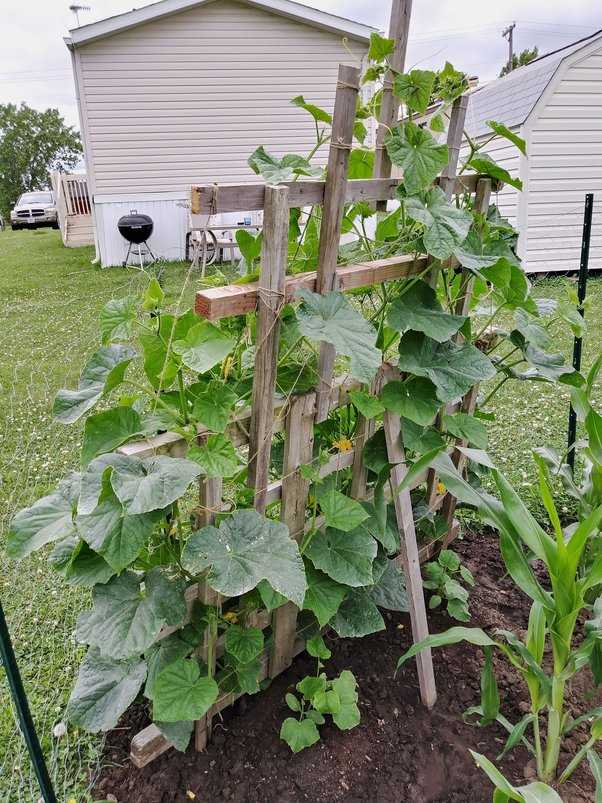
Vining cucumber varieties have longer vines and require more space to grow. They are best suited for larger containers or garden beds where they have room to spread out. If you want to grow vining cucumbers on your windowsill, make sure you have a spacious area or choose a smaller and more compact vining variety.
When growing vining cucumber varieties, it is important to provide support for the vines to climb. This can be done using trellises, stakes, or cages. The support should be sturdy enough to hold the weight of the vines and the growing cucumbers. Place the container near a window or on a sunny balcony where it can receive adequate sunlight.
Space Requirements
Regardless of the growth habit, cucumbers need space to grow properly. Each cucumber plant requires at least 1 square foot of space, so make sure to plan accordingly when choosing your containers. If growing multiple cucumber plants, provide enough space between each plant to allow for adequate air circulation and prevent overcrowding.
Remember to regularly monitor the growth of your cucumber plants and adjust their support structures or spacing as needed. With the right variety and proper space requirements, you can successfully grow cucumbers on your windowsill and enjoy fresh and delicious cucumbers right at home.
Provide the Right Growing Conditions for Your Cucumbers
Cucumbers thrive in specific growing conditions, so it’s important to create the right environment for them to grow successfully on your windowsill. Here are some key factors to consider:
1. Sunlight
Place your cucumber plants in a sunny spot on your windowsill, as they require at least 6-8 hours of direct sunlight per day. If your windowsill doesn’t receive enough sunlight, you can supplement it with artificial grow lights.
2. Temperature
Cucumbers prefer warm temperatures between 70-85°F (21-29°C). Avoid exposing them to cold drafts or extremely high temperatures, as it can damage or stunt their growth. Consider using a thermometer to monitor the temperature around your windowsill.
3. Ventilation
Good airflow is essential for preventing diseases and promoting healthy cucumber growth. Keep a window slightly open or use a small fan to ensure proper ventilation. Avoid placing the plants near heating or cooling vents, as it can lead to fluctuating temperatures and poor air circulation.
4. Humidity
Cucumbers prefer moderate to high humidity levels, around 60-70%. To increase humidity, you can place a tray filled with water near the plants or use a humidifier. Mist the leaves occasionally, being careful not to overdo it as excessive moisture can promote fungal diseases.
5. Watering
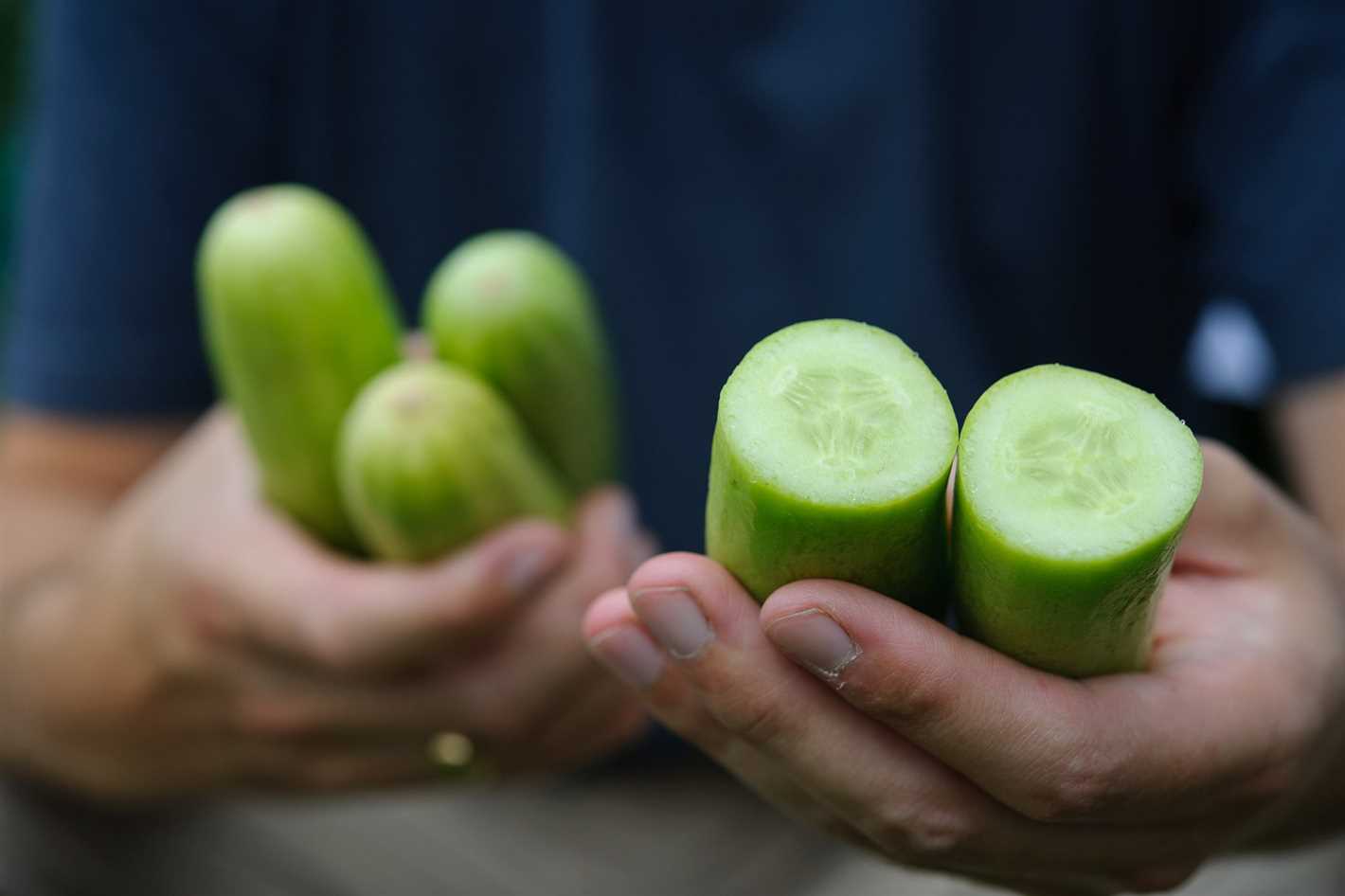
Water your cucumber plants regularly, aiming to keep the soil evenly moist but not waterlogged. Check the moisture level by sticking your finger about an inch into the soil – if it feels dry, it’s time to water. Avoid letting the soil dry out completely or keeping it too wet, as both can harm the plants.
6. Fertilizing
Provide your cucumber plants with a balanced fertilizer every 2-3 weeks to ensure they receive the necessary nutrients for healthy growth. Use a slow-release fertilizer or dilute a liquid fertilizer according to the manufacturer’s instructions.
7. Support
As cucumbers grow and produce fruits, they will need support to prevent the vines from sprawling and the fruits from touching the ground. Use a trellis, stakes, or a wire support system to train the plants upward and keep the fruits off the soil.
8. Pest and Disease Control
Regularly inspect your cucumber plants for signs of pests such as aphids, spider mites, or cucumber beetles. If necessary, use organic pest control methods or insecticidal soap to keep them at bay. Additionally, be vigilant for any signs of diseases such as powdery mildew or damping-off, and take appropriate measures to prevent their spread.
By providing the right growing conditions for your cucumber plants on your windowsill, you can enjoy a bountiful harvest of fresh cucumbers right at your fingertips.
Ensure Ample Sunlight and Warm Temperature
Cucumbers thrive in warm and sunny conditions. When growing cucumbers on your windowsill, it is important to ensure they receive ample sunlight and are kept in a warm environment. Here are some tips to ensure your cucumbers get the right amount of sunlight and warmth:
1. Choose a Sunny Location
Place your cucumber plants in a sunny location on your windowsill where they can receive at least 6-8 hours of direct sunlight each day. South-facing windows are typically the best choice for maximum sunlight exposure.
2. Rotate the Plants
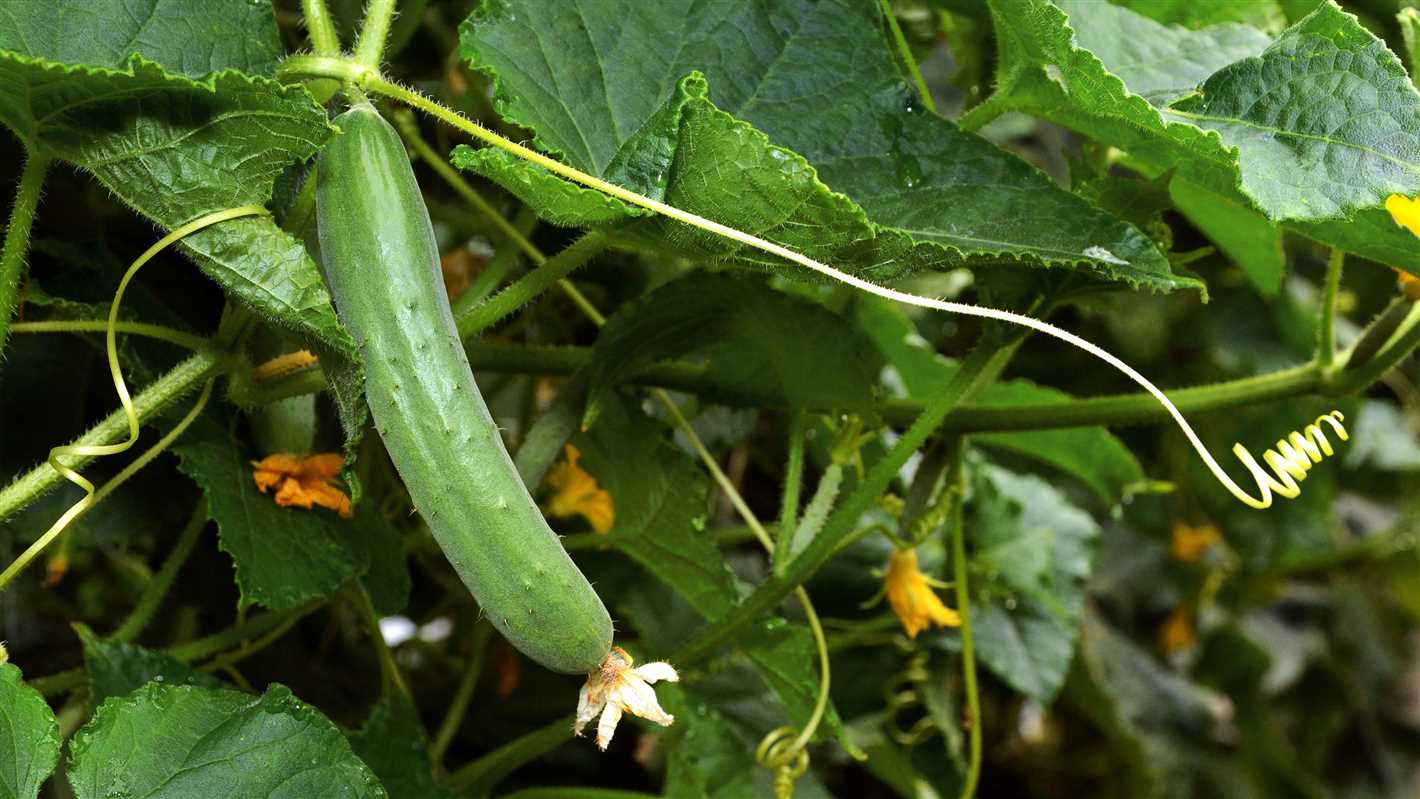
Rotate your cucumber plants regularly to ensure that all sides of the plant receive equal sunlight. This will prevent the plant from leaning towards the light and encourage even growth.
3. Supplement with Artificial Light
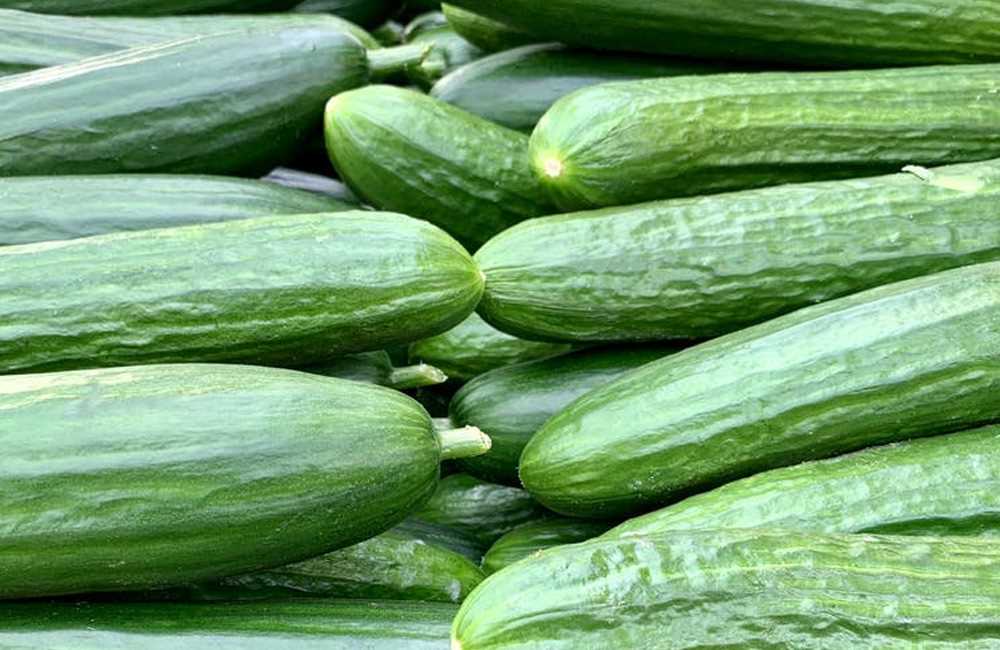
If your windowsill doesn’t provide enough natural sunlight, you can supplement with artificial light. Use fluorescent or LED grow lights positioned above the plants to provide the necessary light for photosynthesis.
4. Maintain Warm Temperature

Cucumbers prefer temperatures between 70-85°F (21-29°C) for optimal growth. Ensure your windowsill is kept warm by avoiding cold drafts and using insulation if necessary. You can also use a heat mat under the pots to provide additional warmth.
5. Use Reflective Surfaces
Maximize sunlight exposure by using reflective surfaces, such as aluminum foil, on the walls or windows near the cucumber plants. This will help redirect and intensify the sunlight onto the plants.
By ensuring ample sunlight and warm temperatures for your cucumber plants, you can successfully grow them on your windowsill and enjoy fresh cucumbers throughout the growing season.
Create a Well-Draining Soil Mix
To successfully grow cucumbers on your windowsill, it’s crucial to use a well-draining soil mix. This ensures that excess water can easily flow through the soil, preventing the roots from becoming waterlogged and susceptible to diseases. Here are some tips to create a well-draining soil mix:
- Choose the right ingredients: Start with a high-quality potting mix that is specifically formulated for containers. Avoid using garden soil, as it tends to be too heavy and doesn’t drain well. You can also add perlite or vermiculite to improve drainage.
- Add organic matter: Mix in compost or well-rotted manure to improve the soil’s structure and drainage. Organic matter helps retain moisture while allowing excess water to drain away.
- Avoid compacting the soil: After filling the container with soil, lightly tap the sides to settle it. Avoid compacting the soil too much, as it can lead to poor drainage.
- Consider using a saucer: If you’re using a decorative container without drainage holes, place a saucer or tray underneath to catch excess water. Empty the saucer regularly to prevent water from sitting in it and causing root rot.
By creating a well-draining soil mix, you provide the optimal growing conditions for your cucumber plants. This helps prevent water-related issues and promotes healthy root development, resulting in vigorous and productive plants.
Watering and Nutrient Needs for Your Windowsill Cucumbers
Watering and providing the right nutrients are essential for the successful growth of cucumbers on your windowsill. Here are some tips to ensure your cucumbers receive the proper care:
1. Watering:
- Regularly check the moisture level of the soil in your containers. Cucumbers prefer moist soil, so make sure it doesn’t dry out completely.
- Water your cucumber plants deeply, allowing the water to reach the roots. Avoid overwatering, as it can cause root rot.
- Use room temperature or lukewarm water for watering your cucumbers. Cold water can shock the plants.
- Water your plants early in the morning or late in the evening to minimize evaporation and allow the leaves to dry before nightfall.
2. Nutrient Needs:
- Choose a high-quality, well-draining potting mix for your cucumber plants. This will provide the necessary nutrients and good drainage.
- Before planting the cucumber seeds or seedlings, mix in some compost or well-aged manure to enrich the soil with nutrients.
- Apply a balanced, water-soluble fertilizer once every two weeks during the growing season. Follow the manufacturer’s instructions for the recommended dosage.
- Cucumbers are heavy feeders, so it’s important to replenish the nutrients in the soil periodically. You can also use organic fertilizers like fish emulsion or seaweed extract.
- Monitor the leaves of your cucumber plants for signs of nutrient deficiencies, such as yellowing or stunted growth. Adjust your fertilization routine accordingly.
By providing adequate watering and meeting their nutrient needs, you can ensure healthier and more productive cucumber plants on your windowsill.
Implement a Regular Watering Schedule
One of the most important factors in successfully growing cucumbers on your windowsill is maintaining a regular watering schedule. Cucumbers need consistent moisture to thrive, so it’s crucial to keep the soil evenly moist but not waterlogged.
Here are some tips for implementing a regular watering schedule:
- Check the soil moisture: Before watering the cucumber plants, check the soil moisture level by sticking your finger about an inch into the soil. If it feels dry, it’s time to water.
- Water thoroughly: When watering, make sure to thoroughly saturate the soil. This encourages deep root growth and helps the cucumbers withstand dry periods.
- Water in the morning: It’s best to water your cucumber plants in the morning, as this allows the foliage to dry out during the day. Moisture on the leaves for an extended period can lead to fungal diseases.
- Avoid overhead watering: While it’s important to keep the soil moist, try to avoid overhead watering, as it can increase the risk of fungal diseases. Instead, direct the water to the base of the plants.
- Use a watering can: Using a watering can with a narrow spout allows for precise watering at the base of the plants. This helps prevent water wastage and ensures that the water reaches the root zone.
- Monitor weather conditions: Adjust your watering schedule based on the weather conditions. During hot and dry periods, cucumbers may need more frequent watering, while cooler and rainy periods may require less watering.
By implementing a regular watering schedule and following these tips, you can provide your cucumber plants with the moisture they need for healthy growth and abundant harvests.
Use a Balanced Fertilizer for Optimal Growth
One of the key factors in successfully growing cucumbers on your windowsill is providing them with the right nutrients. Cucumbers are heavy feeders and require a well-balanced fertilizer to support their growth and development.
A balanced fertilizer typically contains equal amounts of nitrogen (N), phosphorus (P), and potassium (K). These nutrients play different roles in the plant’s growth:
- Nitrogen (N): Nitrogen promotes leaf and stem growth, helping the cucumber plant develop a strong and healthy structure.
- Phosphorus (P): Phosphorus is essential for root development and overall plant health. It also supports the plant’s ability to produce flowers and fruits.
- Potassium (K): Potassium is important for fruit development and quality. It helps improve the cucumber’s flavor, texture, and resistance to diseases.
When choosing a fertilizer for your cucumbers, look for one specifically formulated for vegetables or fruit-bearing plants. These fertilizers often have an NPK ratio of 10-10-10 or 12-12-12, indicating the equal proportions of nitrogen, phosphorus, and potassium.
Start fertilizing your cucumber plants a few weeks after they have sprouted. Follow the instructions on the fertilizer package for the recommended application rate. In general, it’s best to apply a balanced fertilizer every two to three weeks throughout the growing season.
It’s important not to over-fertilize your cucumbers, as this can lead to excessive leaf growth and weak stems. Too much nitrogen can also delay fruiting. Always follow the recommended dosage and avoid applying fertilizer directly onto the plant’s leaves to prevent burning.
Remember to water your cucumber plants thoroughly after applying fertilizer to help distribute the nutrients evenly and prevent any potential root burn.
Organic Fertilizer Options
If you prefer to use organic fertilizers, there are several options available that can provide a balanced nutrient supply for your cucumber plants. Some examples include:
- Compost: Incorporate well-rotted compost into the soil before planting your cucumber seeds or transplanting seedlings. Compost enriches the soil with organic matter and essential nutrients.
- Manure: Well-aged animal manure can be used as a fertilizer, but make sure it has been composted to prevent burning the plants.
- Bone meal: Bone meal is a slow-release organic fertilizer rich in phosphorus, which can promote healthy root development and fruit production.
- Fish emulsion: Fish emulsion is a liquid fertilizer made from fish waste. It is high in nitrogen and provides a quick nutrient boost to plants.
When using organic fertilizers, follow the recommended application rates and guidelines to avoid over-fertilizing and causing nutrient imbalances.
By using a balanced fertilizer and providing your cucumber plants with the necessary nutrients, you can ensure optimal growth and a bountiful harvest of delicious cucumbers right from your windowsill.
Managing Pests and Diseases on Your Windowsill Cucumbers
Growing cucumbers on your windowsill can be a rewarding experience, but it’s important to be aware of the potential pests and diseases that can affect your plants. By taking proactive measures and implementing proper care tactics, you can keep your cucumber plants healthy and thriving.
Pests
One of the most common pests that affect cucumber plants is aphids. These small insects feed on the sap of the plants, causing damage to the leaves and stems. To control aphids, you can introduce natural predators such as ladybugs or use insecticidal soap.
Another pest that can be problematic for indoor cucumber plants is spider mites. These tiny pests suck the sap from the leaves, causing them to turn yellow and wither. You can control spider mites by regularly spraying your plants with water to increase humidity or using a miticide.
Fungal diseases such as powdery mildew can also affect cucumber plants grown indoors. This disease appears as a white powdery substance on the leaves and stems. To prevent powdery mildew, make sure your plants have adequate air circulation and avoid overwatering. If you notice signs of powdery mildew, you can use a fungicide to treat the affected areas.
Diseases
Cucumber mosaic virus is a common disease that affects cucumber plants. It causes stunted growth, yellowing of leaves, and mottling on the foliage. Once infected, there is no cure for the virus, so prevention is key. To minimize the risk of cucumber mosaic virus, avoid planting cucumbers near other infected plants and remove any infected plants immediately.
Root rot is another disease that can affect cucumber plants, especially when they are overwatered or have poor drainage. To prevent root rot, make sure your plants are planted in well-draining soil and avoid overwatering. If you notice signs of root rot, such as wilting or yellowing leaves, remove the affected plants.
Tips for prevention and care:
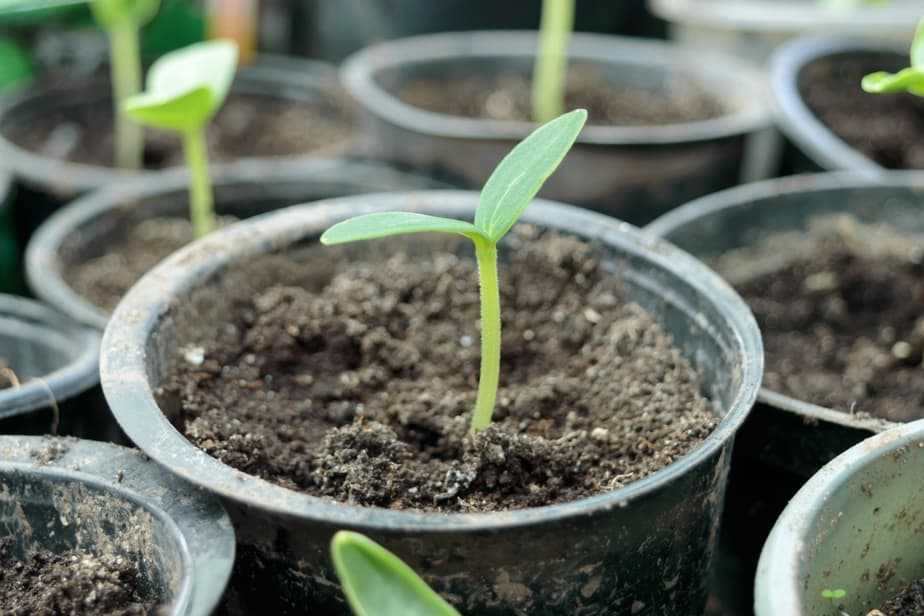
- Regularly inspect your plants for signs of pests and diseases.
- Provide adequate air circulation to prevent fungal diseases.
- Water the plants at the base to avoid wetting the leaves.
- Remove any infected plants immediately to prevent the spread of diseases.
- Introduce natural predators, such as ladybugs, to control aphids.
- Keep a close eye on the humidity levels to prevent spider mites.
- Avoid overcrowding your plants to minimize the risk of diseases.
By keeping a watchful eye on your windowsill cucumber plants and implementing these pest and disease management tips, you can increase the chances of a successful harvest.
Inspect Your Plants for Common Pests
Pests can be a major problem for cucumber plants, so it’s important to inspect your plants regularly to catch any infestations early. Here are some common pests to watch out for:
- Aphids: These small, pear-shaped insects suck the sap from cucumber leaves and can quickly multiply. You may notice yellowing or curling leaves if aphids are present. Use an insecticidal soap or neem oil to control them.
- Spider Mites: Tiny red or brown spiders that suck the juices out of leaves, causing them to turn yellow and dry up. Spider mites can be difficult to see, but if you notice fine webbing on your plants, it’s a sign of an infestation. Spray your plants with water or use insecticidal soap to get rid of them.
- Cucumber Beetles: These small insects have yellow and black stripes and can transmit diseases to cucumber plants. They feed on leaves and flowers, causing damage and stunting growth. Use row covers or insecticides to control cucumber beetles.
- Slugs and Snails: These slimy creatures can eat holes in cucumber leaves and fruits. They are most active at night and thrive in damp conditions. Handpick slugs and snails off your plants, or use traps or iron phosphate-based baits to control them.
Regularly inspecting your cucumber plants for pests and taking action as soon as you notice a problem can help prevent serious damage and keep your plants healthy and productive.
“Question-Answer”
What are the best cucumber varieties for growing on a windowsill?
Some of the best cucumber varieties for growing on a windowsill include Miniature White, Picklebush, and Salad Bush. These varieties are compact and are well-suited for growing in containers.
Can I grow cucumbers in a small pot on my windowsill?
Yes, you can definitely grow cucumbers in a small pot on your windowsill. Just make sure to choose a compact cucumber variety and provide adequate sunlight, water, and nutrients for the plant.
How much sunlight do cucumbers need to grow on a windowsill?
Cucumbers require at least 6-8 hours of direct sunlight per day to grow properly on a windowsill. Make sure to place your pots near a south-facing window or use grow lights to provide the necessary light.
What type of soil should I use for growing cucumbers on a windowsill?
For growing cucumbers on a windowsill, use a well-draining potting mix that is rich in organic matter. You can also add some perlite or vermiculite to improve drainage.
How often should I water my cucumber plants on a windowsill?
Cucumber plants on a windowsill should be watered regularly, but make sure not to overwater them. Check the soil moisture level with your finger and water when the top inch of soil feels dry. In general, it’s better to underwater than overwater cucumbers.
Do I need to use fertilizers for growing cucumbers on a windowsill?
Yes, it is recommended to use a balanced fertilizer to provide essential nutrients to your cucumber plants. Use a water-soluble fertilizer and follow the instructions on the label for application rates and frequency.







